by Tom Gibson
What could possibly interest a driver through the landscape west of Toledo? Flat corn and soy bean fields stretch to the horizon—green in summer, gray-brown in winter. That’s the way it’s been for the nearly 25 years my wife and I have been traveling to Chicago to visit our daughter.
In the last three years, though, we’ve noticed a change. Instead of bare, tilled soil in winter, the majority of farmland we observe remains untilled and is filled with corn and other crop stubble. Although colors remain pretty much the same gray-brown, what we are seeing is revolutionary. Conventional farmers, who have been growing crops in the best agri-chemical, paint-by-numbers style—so many pounds of artificial nitrogen, phosphorous, etc. per acre–, are now consciously prioritizing growing life in their soil.
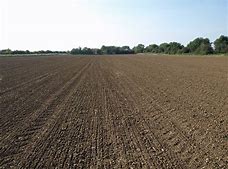
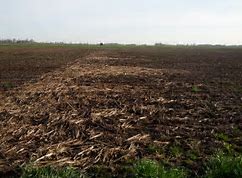
We’re not the only ones to notice this change. Two years ago it even made the New York Times.
Now a book has come out that puts the shift into a worldwide context. It’s called Growing A Revolution by David Montgomery. Montgomery is a professor of geomorphology at the University of Washington; author of previous popular books, most notably “Dirt,” and a winner of the MacArthur Foundation’s “genius” award.
Montgomery’s thesis is that a consensus is emerging in all corners of agriculture and horticulture—from conventional to organic—that the only path toward resilient food production must include an interlocking trio of practices that fall under the rubric of “conservation agriculture.” These are: No till soil management, cover crops, and crop rotation.
As obvious as these three practices will sound to Gardenopolis Cleveland’s cutting edge gardeners, the abiding wonder of this book is how often humanity has gotten this apparently straightforward mix wrong. The Mesopotamians messed up the (once) Fertile Crescent. Thomas Jefferson experimented with cover crops and crop rotation, but also invented and promoted the mold-board plow—that great destroyer of mycorrhizal fungi and their nutrient-gathering capability– and thus managed to undo much of the good of his other innovations. In the 1970s, a young researcher named Rattan Lal, now one of Ohio State University’s most distinguished professors, vastly improved small farm productivity in African test plots with a version of conservation agriculture. But a few short years after his departure, all his good work had been overgrown with trees. Only the small-scale farmers of China and Japan appear to have been able maintain consistently healthy soil over centuries (aided enormously by their techniques for safely recycling both animal and human waste).
The main contributing factor to humanity’s soil-building failures has been a combination of population growth and an impatience with gradualism. As Europe’s much-plowed soils were running out of fertility, European colonialists replaced it with the Peruvian seabird waste known as guano. As guano supplies diminished, German chemists developed the Haber-Bosch process to produce artificial nitrogen fertilizer. Artificial fertilizers also became one of the pillars of the so-called “Green Revolution” of the 1960s, that temporarily rescued farmers worldwide from depleted soils and diminished harvests.
You know the rest of the story: monocultures, fertilizer runoff, Monsanto, glycosophate, herbicide-resistant “superweeds,” and a steady decrease in soil fertility that all of the ministrations of Big Ag have only made worse (requiring still more artificial inputs).
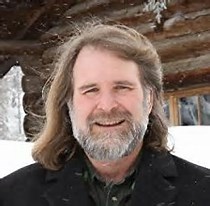 What Montgomery has discovered, however, is that we seem to have reached a genuine tipping point that is taking us back to soil and its neglected life-giving potential. One of my favorite moments in the book occurs when Montgomery, the bearded “Left Coast” professor is invited to speak to a group of Kansas farmers.
What Montgomery has discovered, however, is that we seem to have reached a genuine tipping point that is taking us back to soil and its neglected life-giving potential. One of my favorite moments in the book occurs when Montgomery, the bearded “Left Coast” professor is invited to speak to a group of Kansas farmers.
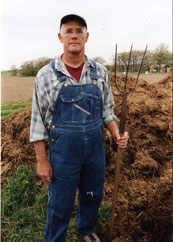
“As I ended my talk I looked out on a sea of baseball hats. One elderly fellow in the middle stood up, stuffed his hands down into his pockets, and said he’d taken one look at me and didn’t think I could possibly say anything worth listening to. I braced myself for what was to come. But then he surprised me. He said the more I talked, the more sense I had made. He’d seen what I was talking about on his farm. It no longer had the rich fertile topsoil his grandfather had plowed. Something needed to change if his own grandchildren were going to prosper working his land.”
What has also changed is soil science. Mycorrhizal fungi were only named and their function thoroughly described by German scientist A.B. Frank in 1885. Frank contended that mycorrhizal fungi and plants worked in a vital system of symbiosis, with plants trading sugars made via their unique process of photosynthesis for minerals which fungi’s chemical exudates were uniquely able to mine. Frank’s findings flew in the face of conventional wisdom and went through waves of acceptance and dismissal throughout the following century. Yet today we recognize the plant/fungal relationship as the most fundamental to life on land. Neither biological domain could exist on earth without the other (let alone us animals!).
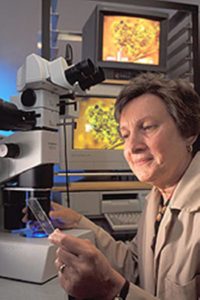
The power of the plant/fungal relationship has only really come into focus in the last 20+ years. In 1996 Sara F. Wright, a U.S.D.A. scientist, first identified glomalin, the mycorrhizal exudate that gives good soil its crumbly texture and, at a micro-level, allows bacteria and fungi to perform their most soil-enhancing functions. (Why hasn’t Sara Wright won a Nobel Prize!)
At the same time, scientists’ recent ability to decode genomes has revealed a vast, previously unknown realm of microbiological life. To soil scientists the soil microbiome is still, literally, terra incognita. We know enough, however, to understand why the trio of conservation agriculture practices that Montgomery describes work so powerfully together.
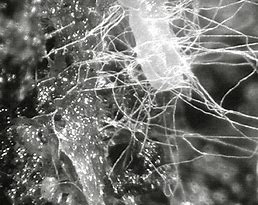 No or minimal tillage allows mycorrhizal fungi to extend their appendages called hyphae. These hyphae, in turn, mine rock and other geological formations for otherwise inaccessible minerals. They also merge with other like fungi and thus create a vast underground network that, sensing some plant’s need for phosphorous, can both mine and deliver it.
No or minimal tillage allows mycorrhizal fungi to extend their appendages called hyphae. These hyphae, in turn, mine rock and other geological formations for otherwise inaccessible minerals. They also merge with other like fungi and thus create a vast underground network that, sensing some plant’s need for phosphorous, can both mine and deliver it.

Cover crops supply their own package of nutrients, including nitrogen (e.g. vetch) and phosphorous (e.g. buckwheat). Harvesting them off above the root, moreover, leaves carbon compounds in the soil to feed all the fungi and other microbiota.
Rotation of multiple crops, the third component of conservation agriculture, follows the lesson that almost every veteran tomato grower knows: One crop in place year after year eventually attracts more natural enemies than it can handle. The more varied crops, the safer they all become. Moreover, different crops access different mycorrhizal species and networks, as well different minerals. (E.g. sunflowers, which draw up zinc and make it available to the other crops around them).
The lesson: in diversity there is redundancy and strength. All three practices conserve carbon and build soil. In fact, Montgomery cites a 2014 Rodale Institute that estimates that complete worldwide conversion to conservation agriculture could offset almost three-quarters of then current global emissions. This might not be as pie-in-sky as a realist might imagine. Montgomery emphasizes throughout how profitable regenerative conservation agriculture can be for farmers (not, however, for suppliers of agri-chemicals!).
Montgomery has clearly written this book for the next potential generation of farmer converts to conservation agriculture and to their potential policymaker supporters. But the predominantly gardener readers of Gardenopolis Cleveland will find the book a useful mirror by which to judge their own practices and act as even more informed consumers. The book is accessible in a comfortable journalistic way, but the reader is always aware that, when required, Montgomery can draw on his deep scientific training to summarize, accept and/or dismiss scientific studies as appropriate.
Some other tidbits/insights:
–Montgomery notes that many “organic” farmers fall short—and their crops suffer- -when it comes to implementing conservation agriculture. The more enlightened seem to be adopting some of the techniques of conventional agriculture—like every once-in-while application of a fungicide—to get their conservation agriculture trio of practices into proper balance. Despite my description above, soil and circumstances vary, and there seems to be a emerging productive middle ground, albeit still with very low chemical inputs.
–The two biggest obstacles to widespread adoption of conservation agriculture in the U.S.? The first, predictably, is Big Ag, the complex of seed, agri-chemicals, equipment producers, and food distributors. These companies dominate U.S. agricultural research and educational funding not to mention the U.S. Dept. of Agriculture. They are also the only entities to consistently profit off the current system. The second, more surprisingly, is crop insurance. The ability of make money even through crop failure keeps our present destructive system in place. Montgomery seems to take special pleasure in describing how well off financially the new conservation agriculture farmers—who pay exponentially less for chemical and other inputs—have become–to the point of fancy wine cellars!. Most are so profitable they don’t bother with crop insurance, even if it is federally subsidized.
–Smaller really is beautiful. Conservation agriculture with its multiplicity of crops tends to lend itself to much smaller farms than the as-far-as-the-eye-can-see, massive monoculture systems. Because the former are more profitable, they may also make room for more -farmers and more prosperous small towns to serve them. Check out this video to see what can happen.
Could a more prosperous rural America close our current rural/urban political divide?
–Finally, a special point of pride for Ohioans. Rattan Lal, whom I’ve mentioned on this blog before, and David Brandt, a farmer near Columbus, emerge as towering heroes of this book. After reading this book, you’ll appreciate these two state treasures even more.
Great information.